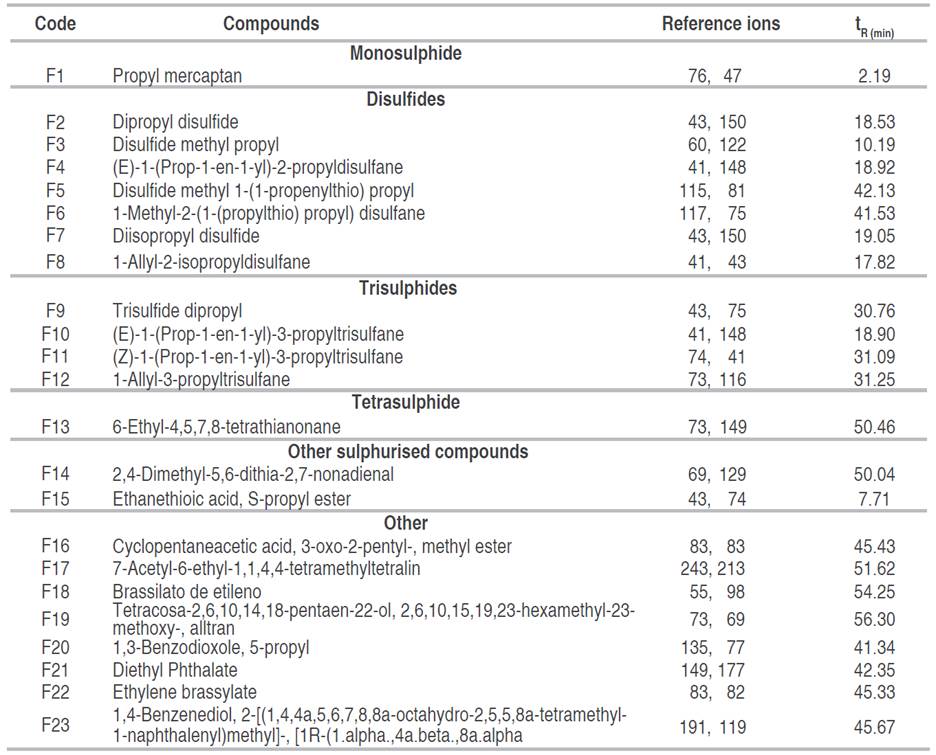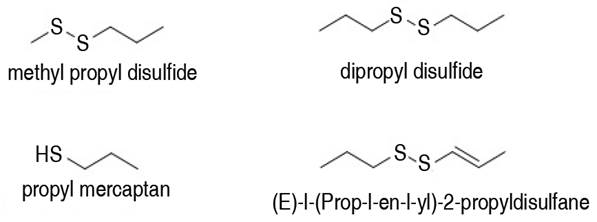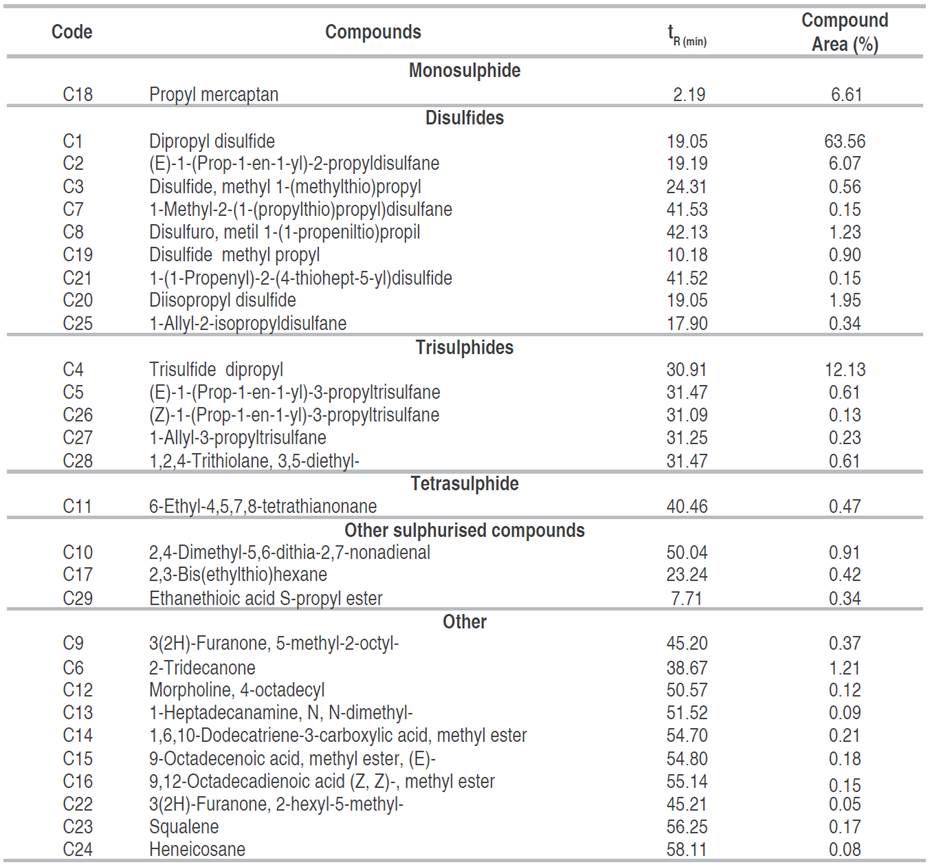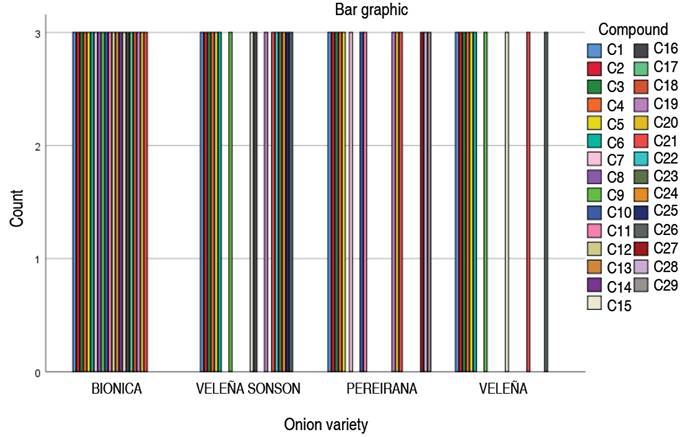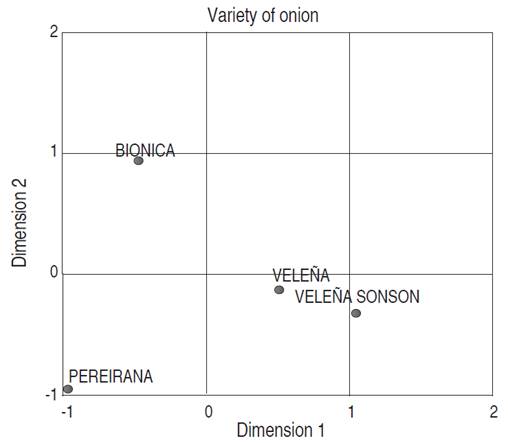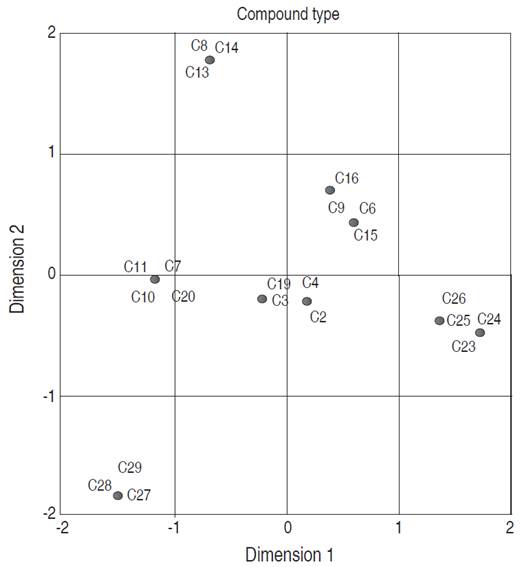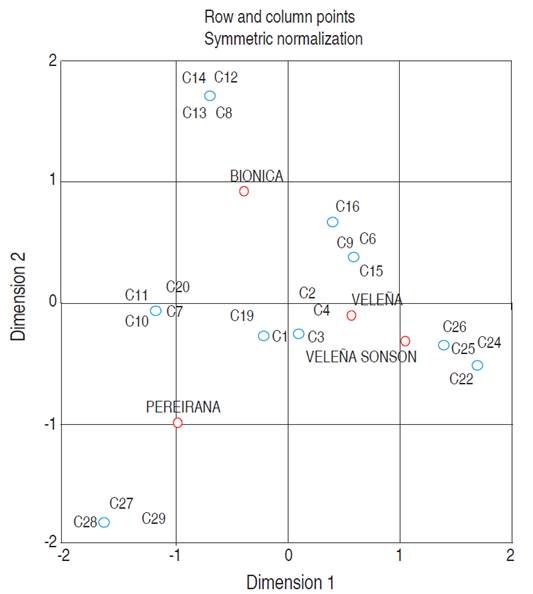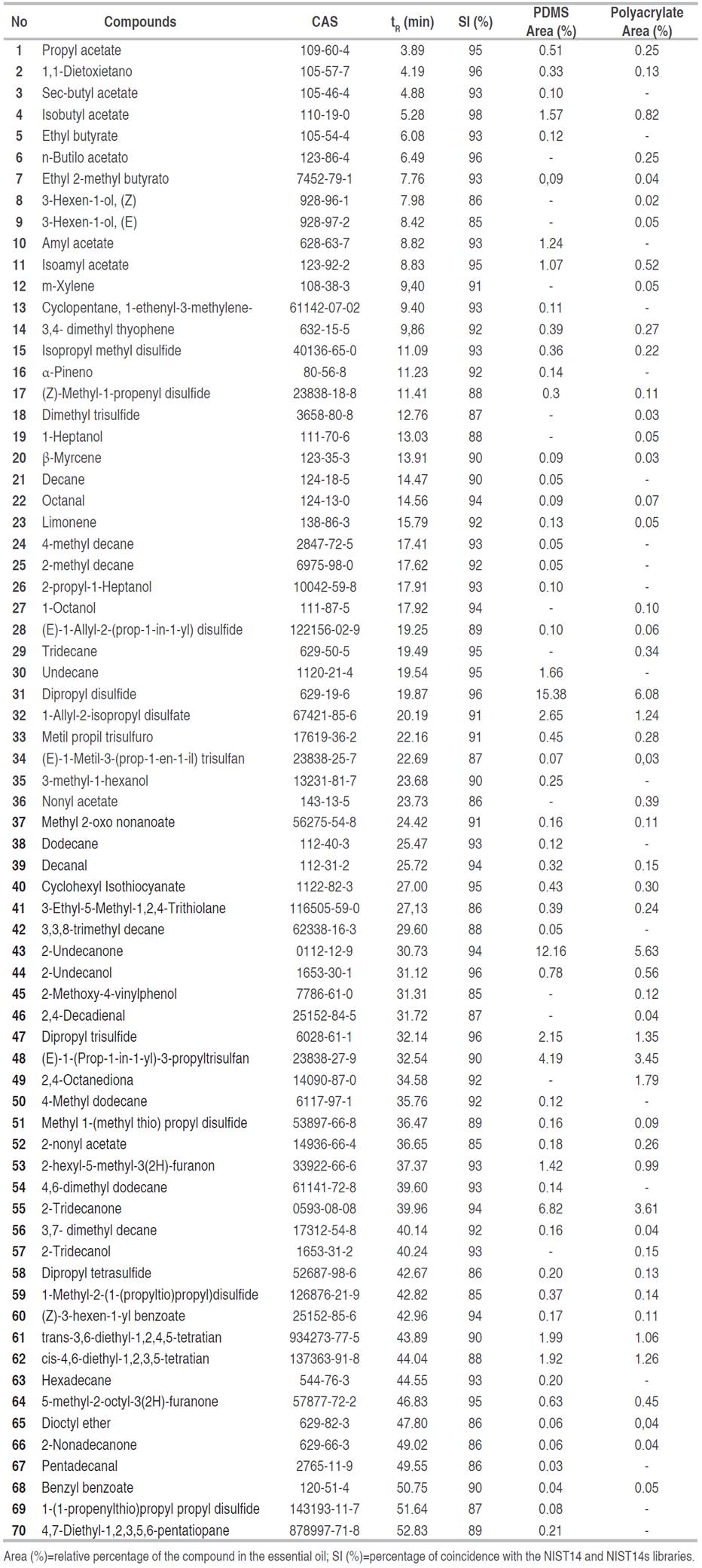Global onion production in 2022 was 93.23 million tons (MT), being China (23.91 MT), India (19.42 MT), Egypt (3.12 MT), USA (3.03 MT), and Iran (2.35 MT) as the top five producers (Kumar et al. 2022). In Colombia, Welsh onion (Allium fistulosum) has been grown since 1950 and is grown from 1,500 to 3,000 meters above sea level (masl), between 12 and 20 °C. According to the Colombian statistics department, in 2019, in Colombia, 16,922 ha of Welsh onion were harvested, with a production of 414,554 tons (DANE 2019).
The Department of Risaralda is the third largest producer of onions in Colombia, with 50,000 tons per year, cultivated since 1960 (Jaramillo and Vallejo 2014). Given the environmental conditions that did not favor cultivation, the plant adapted to the environment, giving rise to a unique material, widely accepted by consumers, called 'Cebolla Pereirana'. This plant was morpho-agronomically characterized by exhibiting thin, dark, and violet pseudo-stems, dark green leaves, intermediate foliage, high tillering, and abundant serosity in leaves, as well as by being resistant to breaking and a cause of strong irritation of the eyes when the leaves are squeezed (Polanco and Pérez 2018).
Fresh onions are a cornerstone of global cuisine due to their distinctive flavor, which is derived from sulfur compounds found in the volatile fraction, commonly referred to as onion oil. This oil is obtained via steam distillation of crushed onions, yielding a complex mixture predominantly composed of mono, di, tri, and tetrasulfides with various alkyl groups (Hosoda et al. 2003). As a result, onion oil has been traditionally and extensively utilized in the food industry to augment the flavors of processed foods (including soups, meats, and ready-to-eat meals), sauces, salad dressings, and dips. This method effectively bypasses the difficulties associated with managing large volumes of fresh produce (Lawless 2012). Given the widespread use of both fresh onions and onion essential oil, this study incorporates both materials.
The genus Allium has a wide variety of sulfur compounds responsible for taste and smell, with marked differences in volatile organic compounds (VOCs) in the various onion species. The compound responsible for generating this variety of compounds is S-alk(en)yl-L-cysteine sulfoxides (ACSOs), thanks to the enzymatic activity of allinase. This pattern of sulfur compounds is common to most Allium species. The VOCs profile is concentrated, and the result is a mixture of sulfur-containing compounds including thiosulfinates, mono-, di- and tri-sulfides as well as specific compounds such as the lachrymatory or tear factor, thiopropanal S-oxide (Colina-Coca et al. 2013).
The sulfur compounds are extracted using solvent-free liquid-liquid extraction, hydro distillation, or headspace solid-phase microextraction (HS-SPME). The extraction process can be regarded as a dynamic equilibrium involving the target compounds evaporating into the headspace and their subsequent adsorption onto and desorption from the fiber. The process depends partly on the chemistry and physical dimensions of the fiber coating (exposed area and film thickness), in addition to the aerodynamics inside the headspace (Peng et al. 2020).
The HS-SPME/GC-MS technique used to analyze VOCs is performed with small sample amounts, and avoids the use of solvents, promoting sustainable chemistry and detecting a wide variety of compounds simultaneously (Licen et al. 2021). The SPME is based on the equilibrium of partition of compounds of interest, between the matrix and the extraction phase that covers the surface of the fused silica fiber. This fiber should be selected according to the selectivity of the compounds to be assessed, adapting the time of exposure, equilibrium temperature, and dynamic or static mode, which is decisive in obtaining adequate detection limits.
The efficiency of this technique depends on the polarity of the fiber, and polydimethylsiloxane (PDMS) coated fibers have been satisfactory in most cases. Previously, the VOCs of fresh leaves of Allium fistulosum and Allium tuberosum were studied with HS-SPME/GC-MS and PDMS fibers, finding dipropyl disulfide (67%), 1-propenylpropyl disulfide (23%), and dipropyl trisulphide (6%) (Hori 2007). The genus Allium has also been studied with CAR/PDMS fibers, detecting characteristic sulfides such as propyl mercaptan, dimethyl disulfide, 2,5-dimethylthiophene, and allyl propyl disulfide (Zhang and Li 2007).
The present study contributes to the knowledge of the endemic material 'Cebolla Pereirana', which has its production system and is a product highly appreciated by consumers for its attractive spicy flavor and intense smell for culinary applications. However, there is no evidence of studies reporting the volatile compounds present in this onion variety. This is the first study assessing VOCs using HS-SPME/GC-MS, comparing four fibers and four onion varieties (Pereirana, Biónica, Veleña, and Veleña Sonsón) grown in Pereira, Department of Risaralda, Colombia.
MATERIALS AND METHODS
Onion samples
The samples were taken in Pereira, Colombia, during the second semester of 2021, at Castilla and Carmela farms, both at coordinates 4°45'21.4"N 75°36'32.0" W (4.7559450, -75.6088910). The sampling was performed randomly in a zig-zag route, taken between four and six shoots (stems, leaves, and roots) per hectare (4 ha) (Silva and Uchida 2000), of each of the four Welsh onion varieties, namely: (a) Pereirana; (b) Veleña; (c) Veleña Sonsón; and (d) Biónica.
Volatile organic compound analysis
Fresh sample preparation
The samples were transported at 4 °C and stored in a refrigerator at the same temperature. The assay was conducted three times. The leaves and stems of each variety weighing 1 g were finely cut with a knife and stored in a hermetically-sealed SPME vial (D'Auria and Racioppi 2017). HS-SPME-GC-MS Analysis of onion (Allium cepa L.) and shallot (Allium ascalonicum L.). Food Res, 1(5), 161-165. For each sample, the HS-SPME analysis was performed at a temperature of 45 °C with a time of 5 min of homogenization and 15 min of exposure to the fibers divinylbenzene/carboxen/polydimethylsiloxane (DVB/CAR/PDMS), polyacrylate, polydimethylsiloxane-divinylbenzene (PDMS/DVB), and polydimethylsiloxane (PDMS).
Extraction of Essential Oil from the Pereirana Variety Onion
The leaves and stems were chopped and taken to the steam-dragging equipment. The assay was conducted three times (Boutekedjiret et al. 2003; Peredo et al. 2009) with a sample ratio of solvent 1:1. The distillate was re-extracted with ethyl acetate and concentrated in a rotary evaporator. The solvent was evaporated in a rotary evaporator at 40 °C at 240 mbar. Subsequently, 3 µL of the essential oil were diluted (1:1,000) with distilled water, stirring at 6,000 rpm, and brought into equilibrium for 20 min at 40 °C (Peredo et al. 2009). Then, the SPME fiber was exposed in the headspace for 30 min at 40 °C (triplicated analysis) (Soto et al. 2015). The qualitative tentative analysis was performed by comparison with the mass spectra of the NIST14 and NIST14s libraries. The quantification method was carried out by integrating the area under the curve, represented as a percentage of the total area (% Area).
Analysis of the fresh sample and essential oil Instrumentation
The SPME fibers used were polydimethylsiloxane (PDMS, 100 μm), polyacrylate (85 μm), polydimethylsiloxane-divinylbenzene PDMS/DVB 65, divinylbenzene-carboxen-polydimethylsiloxane (DVB/CAR/PDMS 50/30 μm) from Supelco® Bulletin 925F-SPME (Sigma-aldrich 2009). The fibers were conditioned according to the manufacturer's instructions. GC-MS analyses were performed on Shimadzu GC2010 Plus + QP2020 equipment, with an SH-Rxi-5Sil MS column (30 m x 0.25 mm x 0.25 μm).
Compounds were desorbed through the injection port with helium as carrier gas (Grade 5.0), at a linear velocity of 35.0 cm s-1. The run starts with a temperature of 40 °C (2 min), increasing 3 °C min-1, up to 90 °C (3 min), and then increasing 3 °C min-1, up to 150 °C (5 min), and finally, there is a heating rate of 10 °C min-1, up to 280 °C (1 min) for a total run time of 60.67 min. Mass spectra were obtained by electron impact (EI) at 70 eV. The temperatures of the ionization source and the transfer line were 220 and 250 °C, respectively. The qualitative tentative analysis was performed by comparison with the mass spectra of the NIST14 and NIST14s libraries. The quantification method was carried out by integrating the area under the curve, represented as a percentage of the total area (% Area).
Statistical analysis
A descriptive analysis of the variables 'type of onion' and 'type of compound' was performed using the IBM® SPSS® Statistics 25 software, both on a nominal scale. The qualitative data was presented through a contingency table, indicating the attributes for each variable, type of onion (Biónica, Pereirana, Veleña, and Veleña Sonsón), and type of compound (present in the chromatographic analysis).
A simple correspondence analysis was performed to jointly study these two qualitative variables. It was considered appropriate for dealing with contingency tables in which the existing cases are represented in the categories of each of the qualitative variables under study, i.e., type of onion and type of compound. The association test used was the chi-square test of independence (χ2), which provided information on the relationship that could exist between the two variables (López 2004).
RESULTS AND ANALYSIS
Prior studies have similarly characterized volatile organic compounds in onions, utilizing multivariate statistical techniques, including cluster analysis, principal component analysis, and discriminant analysis, to identify compound groups associated with specific onion varieties (Taglienti et al. 2021; Cozzolino et al. 2021). Volatile organic compounds in onions are responsible for their distinct sensory attributes and global culinary popularity. However, these compounds vary with onion variety, underscoring the importance of their comprehensive characterization (Bello et al. 2013).
This study aimed to characterize four onion varieties in Pereira, Colombia, by employing chromatographic analysis to detect volatile compounds and conducting statistical analyses to correlate compound types with onion varieties.
Analysis of fibers in fresh onion variety Pereirana
Using DVB/CAR/PDMS, PDMS, PDMS/DVB, and polyacrylate fibers, the Pereirana variety was assessed to determine which fiber was the most optimal for the analysis. In the process, it was possible to observe 23 compounds according to their mass spectra of the NIST14 and NIST14s libraries. The VOCs profile determined by the four fibers can be observed in Table 1.
Among the 23 compounds observed, 65.22% had the characteristic of being sulfurous, namely: F1 (1 monosulphide); F2 to F8 (7 disulfides); F9 to F12 (4 trisulphides); F13 (1 tetrasulphide); and F13 to F14 (other sulphurised compounds). The other eight compounds belonged to aromatic groups or esters. Disulphides and trisulphides were the most observed compounds in the four fibers with retention times of less than 30 min.
The observed compounds were grouped in Table 2, where it is determined that the most indicated fiber to perform the analysis of the various varieties of Welsh onion was PDMS, since it had the greatest affinity with most of the compounds present in the onion variety Pereirana, observing 14 mostly sulfurous compounds. On the other hand, with DVB/CAR/PDMS, PDMS/DVB, and polyacrylate fibers, it was possible to observe nine, five, and eight compounds, respectively.
The compounds observed in most fibers were propyl mercaptan, dipropyl disulfide, methyl propyl disulfide, and (E)-1-(Prop-1-en-1-yl)-2-propyldisulfane (Figure 1). Table 2 shows that compounds F2 (Dipropyl disulfide) and F4 ([E]-1-[Prop-1-en-1-yl]-2-propyldisulfane) were the only ones found in the four assessed fibers. Both are aliphatic sulfur compounds with a very similar molar mass. These compounds, together with F1 (Propyl mercaptan) and F6 (1-Methyl-2-[1-(propylthio)propyl]disulfane) were detected in a study of Allium ascolanicum L. as the most abundant (Indrasari et al. 2021).
PDMS fiber is preferred for the extraction of non-polar analytes, whereas, on the other hand, polyacrylate fiber is preferred for more polar compounds. PDMS/DVB or CAR/DVB fibers can be used for the extraction of polar VOCs with low molecular weight and, in addition, for obtaining increased retention capacity. Although the stationary phase is fundamental, factors such as the concentration of the analytes in the sample, temperature, pH, agitation time, and addition of salts should also be considered (Garcia-Esteban et al. 2004).
Analysis of the extraction results with PDMS fiber in the four varieties of Welsh onion
The four varieties of Welsh onion were analyzed by the PDMS fiber. The main components observed, according to their mass spectra from the NIST14 and NIST14s libraries, are grouped in Table 3, in which 29 compounds were found in the PDMS fiber, mostly sulfurous.
It is possible to observe one monosulphide, nine disulfides, five trisulphides, one tetrasulphide, three sulfur compounds, and 10 different compounds such as ketones or ester derivatives. Disulphides and trisulphides were the most abundant. A descriptive analysis of the bar graph (Figure 2) allowed observation that the onion variety Biónica had the highest number of VOCs, followed by Pereirana and Veleña Sonsón. The variety Veleña had the lowest VOC content.
Compounds such as dipropyl disulfide (E)-1-(Prop-1-en-1-il)-2-propyldisulfane, methyl-1-(1-propenylthio) propyl disulfide, dipropyl trisulphide, and (E)-1-(Prop-1-en-1-il)-3-propyltrisulfan were present in the four varieties, with an area percentage for the Pereirana onion of 65.67, 6.28, 1.08, 12.53, and 0.63%, respectively. This result is in line with those corresponding to a previous study (Bastaki et al. 2021), according to which the active compounds of the genus were Allium disulfide of diallyl disulfide, diallyl trisulphide, diallyl sulfide, dipropyl disulfide, dipropyl trisulphide, 1-propenyl propyl disulfide, allyl methyl disulfide, and dimethyl disulfide that could have antioxidant and antimicrobial properties.
The Pereirana onion was differentiated by containing 1-Allyl-3-propyltrisulfane, (Z)-1-(Prop-1-en-1-yl)-3-propyltrisulfane, 1-Allyl-2-isopropyldisulfane, ethanethioic acid S-propyl ester, and organo-sulfur compounds, whereas the other varieties differed in having ketones and ester derivatives. Figure 3 presents a chromatogram for the PDMS fiber, whose most abundant peak with tR of 19.05 min corresponded to dipropyl disulfide, which in the Pereirana onion had 20 times the relative abundance concerning the other varieties. This way, it was necessary to dilute the extract since it saturated the mass detector. The compound had reference ions of 43 and 150 atomic mass units (mass spectrum illustrated in Figure 3).
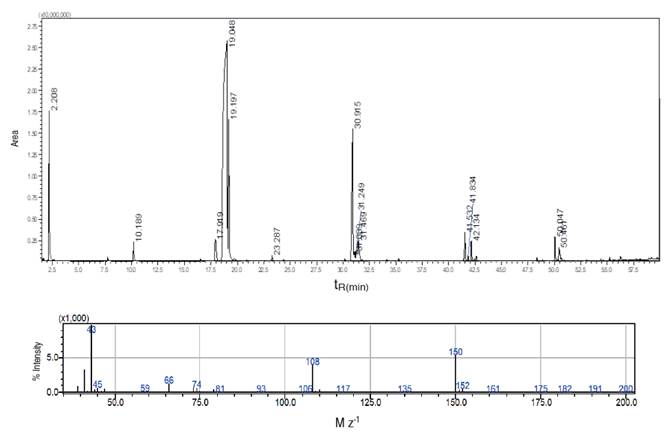
Figure 3 PDMS chromatogram of the Pereirana onion and the respective dipropyl disulfide ions (19.048 tR).
The compounds identified in this study are comparable to those found in the Welsh onion A. Fistulosum, as reported by Choi (2019) using the HS-SPME/GC-MS technique. The predominant compounds identified by the author included (Z)-1-propenyl propyl sulfide, (Z)-propenyl propyl disulfide, (E)-propenyl propyl disulfide, dipropyl trisulfide, and propyl propanthiosulfonate.
Subsequently, a correspondence analysis was performed to describe the relationship or independence between the two nominal variables under study-type of onion and type of compound-and determine the relationships between categories, defining similarities or dissimilarities between the two variables. This procedure allowed a grouping described by the relationship between the categories of the variables that were consistent. To that end, the chi-square test (χ2) was performed,the results of which are illustrated in Table 4.
Based on the results presented in Table 4, it can be observed that the significance obtained through the chi-square statistic (χ2) was 0.000, which rejects the null hypothesis of independence and accepts that there was a relationship between the two variables. Below is Figure 4 in which the four varieties of onion are observed and two varieties that are closely related are Veleña and Veleña Sonsón.
The associated compounds are illustrated in a column points chart (Figure 5) for a type of compound. It can be observed that the compounds C25 and C26 were di and trisulphides with a molar mass between 148 and 180 g mol-1, from which 1-Allyl-2-isopropyldisulfane can be highlighted. This compound has been found in onion oil together with dipropyl disulfide and dipropyl trisulphide; however, the concentrations decreased as the temperature increased, which made the aroma change significantly (Tian et al. 2021).
Associated compounds C6, C9, C15, and C16 were observed, of which the first two had the characteristics of being methyl ketones. Methyl ketones include 2-undecanone and 2-tridecanone, which are important in the flavor and fragrance industry. These compounds have a variety of natural and commercial functions, including pheromones and natural insecticides in plants. Depending on their concentrations, they can generate a protective effect against insect attacks, which may indicate that the varieties Biónica, Veleña, and Veleña Sonsón had some protection against insects (Antonious 2013).
Compounds C1, C3, C4, and C19 gave rise to another group, and compounds C1, C4, and C19 have been reported in previous studies by HS-GC-MS (D'Auria and Racioppi 2017), for example, the Dipropyldisulphide was reported in 51.41% for Allium cepa L. and 58.57% for Allium ascalonicum L.
The presence of this group of compounds could be used for soil biofumigation and plant growth stimulation since they can control pathogens and increase fruit productivity by 15 to 20%. This is a potential biofumigant that could be used to replace methyl bromide, a substance that is characterized by destroying the ozone layer (Arnault et al. 2013).
In studies on essential oils of onions, Allium porrum L. (Alliaceae) was characterized by the presence of dipropyl disulfide, dipropyl trisulphide, and dipropyl tetrasulphide. The results obtained suggest that the presence of the allyl group was essential for the antimicrobial activity of these sulfur derivatives when they are present in Allium or other species (Casella et al. 2013).
Compounds such as diallyl disulfide, diallyl trisulphide, diallyl sulfide, dipropyl disulfide, dipropyl trisulphide, 1-propenylpropyl disulfide, allyl methyl disulfide, and dimethyl disulfide correspond to the most active compounds of the Alliaceae family, which have been proven to have medicinal properties such as antibacterial and antioxidant activities thanks to the organo-sulfur compounds, which are believed to prevent the development of cancer, cardiovascular and neurological diseases, diabetes, liver diseases, as well as allergies and arthritis (Bastaki et al. 2021). These organo-sulfur compounds have demonstrated their versatility in various applications. Patel et al. (2018) explored their potential in promoting hair growth when incorporated into a shampoo formulation. Additionally, Sharma et al. (2018) highlighted their effectiveness as antibacterial agents, while Hannan et al. (2010) investigated their role as bacterial inhibitors in food products. Furthermore, Khater et al. (2009) suggested their suitability as a potential insect repellent. These findings underscore the multifaceted utility of organo-sulfur compounds in diverse fields.
Through the correspondence analysis, it was possible to show that there is a significant relationship between the variable "onion variety" and the variable "type of compound" and in Figure 6 it can be seen for each variety of onion the compounds that are associated with it, and which therefore characterize it.
Study of the essential oil of Pereirana onion
A fluid liquid oil was obtained with a characteristic odor of onion, a light-yellow color, distinctive properties of essential oils (Rojas et al. 2009), and a yield of 0.028%, which was above that reported by other authors 0.0053% (El-Tohamy et al. 2009), 0.0045% (Yassen and Khalid 2009; Pino et al. 2000) and lower than that reported by Dron et al. (1997), which obtained 0.032% in extraction by supercritical fluids. Table 5 shows the compounds observed with the PDMS and polyacrylate fibers, which were the ones that extracted the greatest number of compounds. The result is presented by comparison with the NIST14 and NIST14s libraries. The compounds with more than 85% coincidence with the spectrum of the library are presented. The relative areas for each compound are also presented concerning the total automatically integrated.
The main compound of the essential oil of Welsh onion was dipropyl disulfide (number 31, with 15.38%). Studies presented by Cantrell et al. (2020) for onion Cepa oil extracted with dichloromethane (DCM) managed to extract up to 27 organosulfur compounds, including dipropyl disulfide in great abundance. According to Gao et al. (2019) who used the SPME fiber with phase 50:30 μm DVB/CAR on PDMS, sulfocompounds are the main functional compositions of onion and its oils, exhibiting significant bioactivity in human health. According to this experiment, volatile sulfocompounds, such as disulfide, trisulfide, tetrasulfide, thiophene, and dithiane with dimethyl groups, were the main components of onion oils.
Essential oils are concentrated and contain more than twice as many components as fresh samples. They can be used to confer the aroma and flavor of onions without the difficulties of handling large quantities of fresh products.
It is plausible to anticipate that the acquisition of new knowledge about native species will yield numerous benefits for humanity, offering new services and products, as well as raw materials for various industries (Lead et al. 2005). In this context, the volatile extracts of the Pereira onion are identified as a raw material of interest due to their high concentration of sulfur compounds. These compounds have been attributed with properties useful for insecticide applications (Denloye 2010), and in the pharmaceutical industry as promising anti-allergy, antihistamine, anti-inflammatory, antioxidant agents, and as preventatives for brain edema with neuroprotective potential (Kuete 2017).
Onion extracts can also be utilized in the cosmetic industry due to their propensity to induce tissue regeneration and facilitate wound healing (Celano et al. 2021). Other potential applications include use as an oil oxidation stabilizer, an ingredient in bakery products, pasta, and noodles, a quality improver for meat products, a substrate for enzyme production, and as a raw material for tea. However, extensive research is necessary before these potential applications can be commercialized or scaled up at an industrial level (Kumar et al. 2022).
CONCLUSIONS
The results underscore the efficacy of the HS-SPME/GC-MS method for the analysis of volatile compounds in the essential oil of the Pereirana variety Welsh onion. This method enabled the separation and characterization of up to 70 compounds using four solid-phase microextraction fibers. Notably, the polyacrylate fiber demonstrated a significant affinity for sulfur compounds, with dipropyl disulfide being the most abundant, constituting 65.67% of the total.
The study revealed that the concentration of volatile compounds in the Pereirana variety of Welsh onion exceeds that of other varieties by up to 20 times. As a result, this variety emerges as a promising plant material warranting further research. Its potential applications span across various industries, encompassing food, pharmaceutical, agricultural, and cosmetics.














